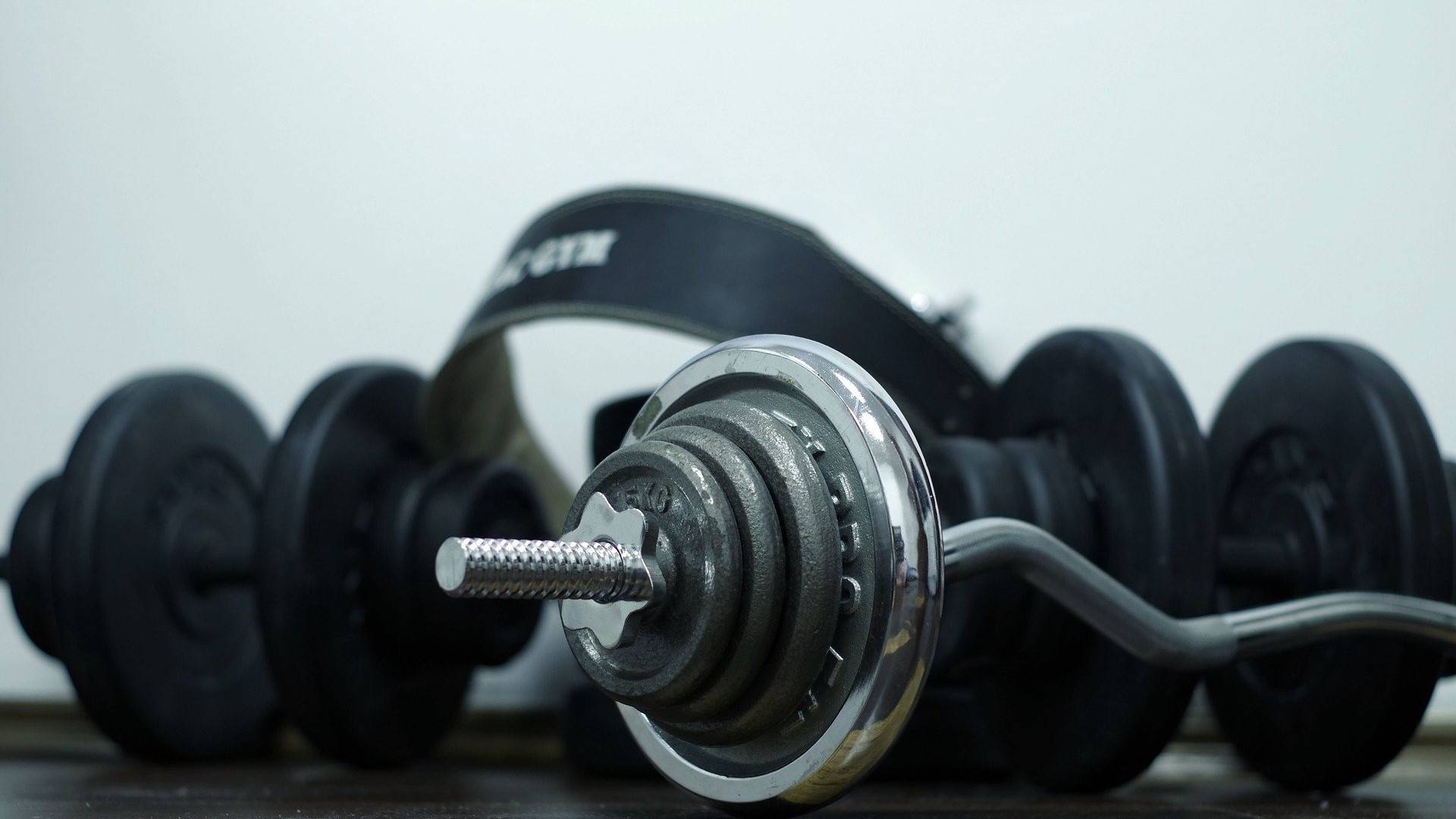Aufgrund der Vielzahl an unterschiedlichen Belastungen beim Triathlon wird dort beinahe die gesamte Muskulatur gefordert und benötigt. Für eine gute Leistungsfähigkeit ist dafür die Kraft eine sehr wichtige Voraussetzung. Um diese zu trainieren sollte neben Ausdauer-Einheiten auch gezieltes und spezifisches Krafttraining in deinem Vorbereitungsplan vorhanden sein. Im Gegensatz zu Gerätetraining besitzt die Freihantel hierfür einen großen Vorteil. Neben der trainierten Muskulatur werden auch stabilisierende Muskelschlingen aktiviert, was zu einer Verbesserung der koordinativen Fähigkeiten führt. Auch das Gleichgewicht wird benötigt und die Bewegungssteuerung und deren Ablauf entspricht außerdem mehr den beim Laufen, Radfahren und Schwimmen erforderten Zielbewegungen.
Grundsätzliche Ausführungshinweise
- langsames und gleichmäßiges Durchführen der Bewegungen ohne Schwung
- Während der gesamten Ausführung die Rumpfmuskulatur zur Stabilisation anspannen
- Atmung: Keine Pressatmung, sondern Ausatmen beim anstrengenden Teil und Einatmen beim Zurückkehren in die Ausgangsstellung
-
Je nach gewünschtem Trainingseffekt die Wiederholungszahl und Pausenlänge anpassen
Hinweis:
- mit wenig Gewicht anfangen und auf eine korrrekte Ausführung achten
- Alternativ zur Hantelbank kann auch ein Hocker genommen werden
Übung 1 - Bizeps-Curls (sitzend)
Ausgangsposition und Durchführung: Beine nach außen gestellt auf eine Bank setzen. Der freie Arm liegt zur Stütze auf dem Oberschenkel und der trainierte Arm zur Stabilisierung knapp über dem Ellbogen am inneren Oberschenkel
Wichtig: Kein Buckel oder Hohlkreuz im Rücken und den Ellbogen beim Absenken der Hantel nie ganz durchstrecken
Was wird trainiert: M. Biceps brachii (zweiköpfiger Oberarmmuskel)
Übung 2 - Trizeps-Kickback
Ausgangsposition und Durchführung: Ein Knie wird auf einer Bank abgesetzt und der gegenseitige Arm wird zur Stütze auf der Bank positioniert. Den Trainingsarm jetzt so weit wie möglich nach hinten strecken und währenddessen möglichst wenig vom Körper entfernen.
Wichtig: Grundstellung sollte stabil mit der Bank in Verbindung stehen. Der Rumpf wird stabilisierend angespannt und der Rücken gerade gehalten. Die Handgelenke nicht knicken sonder als Verlängerung des Unterarms sehen.
Was wird trainiert: M. Triceps brachii (dreiköpfiger Oberarmmuskel)
Übung 3 - Trizepsdrücken (liegend)
Ausgangsposition und Durchführung: Der Rücken wird auf eine Flachbank gelegt und die Beine können, um ein Hohlkreuz zu Vermeiden, auch auf der Bank abgestellt werden. Die Kurzhantel wird jetzt beidhändig gegriffen und nur die Ellbogen werden gebeugt und gestreckt.
Wichtig: Während der gesamten Übung bleiben die Oberarme in einer Position und die Rumpfmuskulatur angespannt
Was wird trainiert: M. Triceps brachii (dreiköpfiger Oberarmmuskel)
Übung 4 - Bankdrücken
Ausgangsposition und Durchführung: Den Rücken so auf die Hantelbank ablegen, dass die Hantelstange sich in Augenhöhe befindet und etwas mehr als schulterbreit gegriffen werden kann. Das Gewicht wird jetzt kontrolliert in Richtung Brust abgesenkt, bis sich die Arme ungefähr auf der Bankhöhe befinden. Beim Anheben die Ellbogen nicht durchstrecken
Wichtig: Rumpfmuskulatur anspannen und Beine bei Hohlkreuz wieder auf der Bank abstellen um dieses zu vermeiden. Handgelenke nicht beugen sondern stabil halten.
Hinweis: Diese Übung kann auch problemlos auf dem Boden ausgeführt werden
Was wird trainiert: M. Pectoralis Major (großer Brustmuskel)
Übung 5 - seitliches Armheben
Ausgangsposition und Durchführung: Die Beine ungefähr schulterbreit auseinander positionieren und die Knie leicht beugen. Rumpfmuskulatur anspannen und die fast gestreckten Arme jetzt auf Schulterhöhe anheben.
Wichtig: Auf stabile Grundstellung achten und die Bewegungen langsam und kontrolliert durchführen.
Was wird trainiert: M. Deltoideus (Deltamuskel)
Übung 6 - Schulterheben/-rollen
Ausgangsposition und Durchführung: Schulterbreiter Stand mit leicht gebeugten Knien. Gewichte für diese Übung relativ hoch wählen und die Schultern so hoch wie möglich anheben. Alternativ kreisende Bewegungen nach oben und hinten durchführen. Die Arme bleiben während der gesamten Bewegung gestreckt.
Wichtig: Grundstellung stabil und Rumpfmuskulatur angespannt halten.
Was wird trainiert: M. Trapezius (Kapuzenmuskel)
Übung 7 - Ausfallschritt mit Kurzhanteln
Ausgangsposition und Durchführung: Aus dem aufrechten Stand einen Ausfallschritt nach Vorne durchführen und dabei das bewegte Bein beugen und strecken. Die Hanteln währenddessen nah beim Körper halten und die Arme gestreckt lassen.
Wichtig: Die Grundstellung und das Gleichgewicht stabil halten. Durch die Distanz des Ausfallschritts kann die Übungsintensität gesteuert werden.
Was wird trainiert: M. Glutaeus maximus (großer Gesäßmuskel) und des M. Quadriceps femoris (vierköpfiger Oberschenkelmuskel)
Viel Spaß beim Training!




















